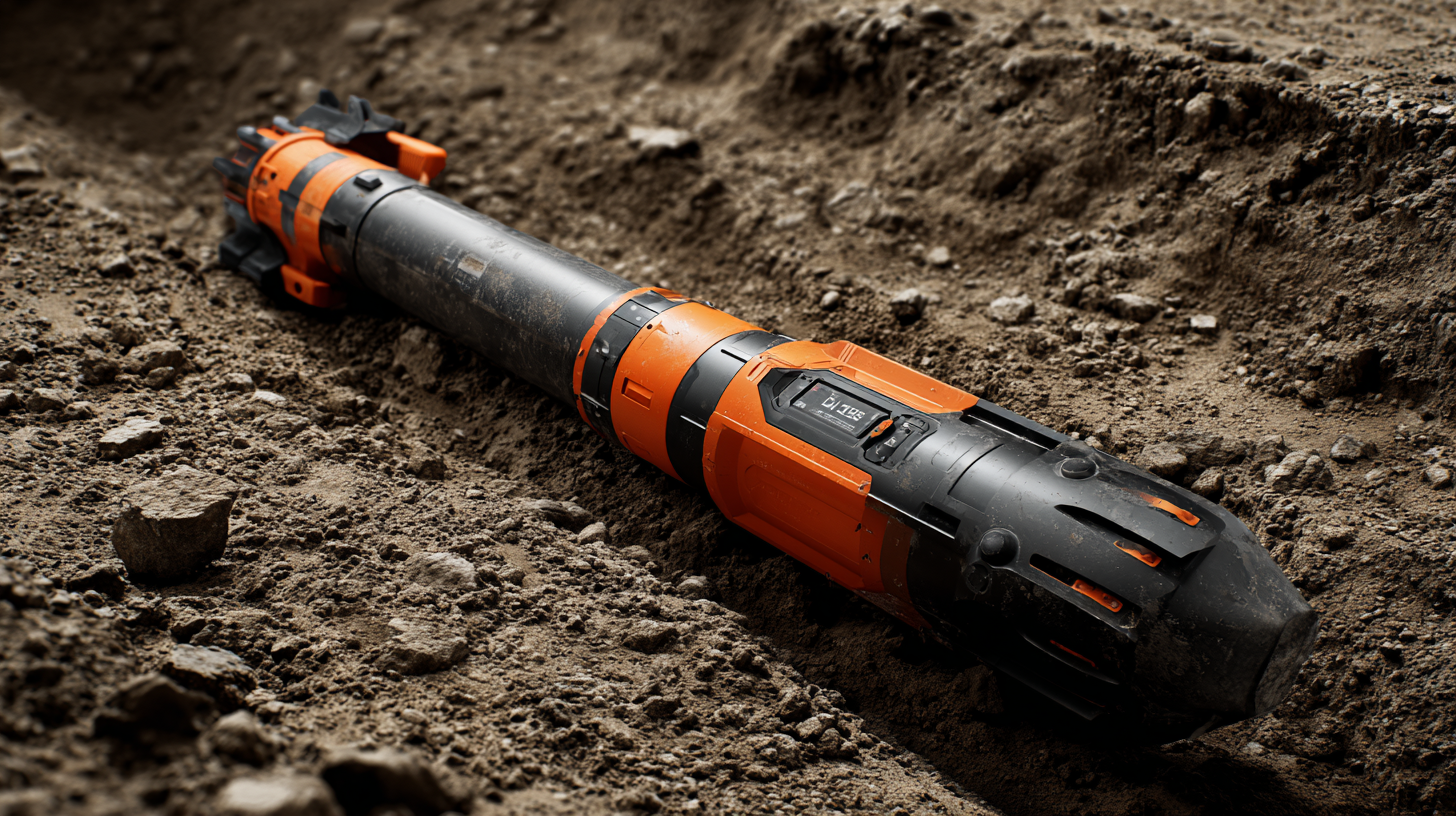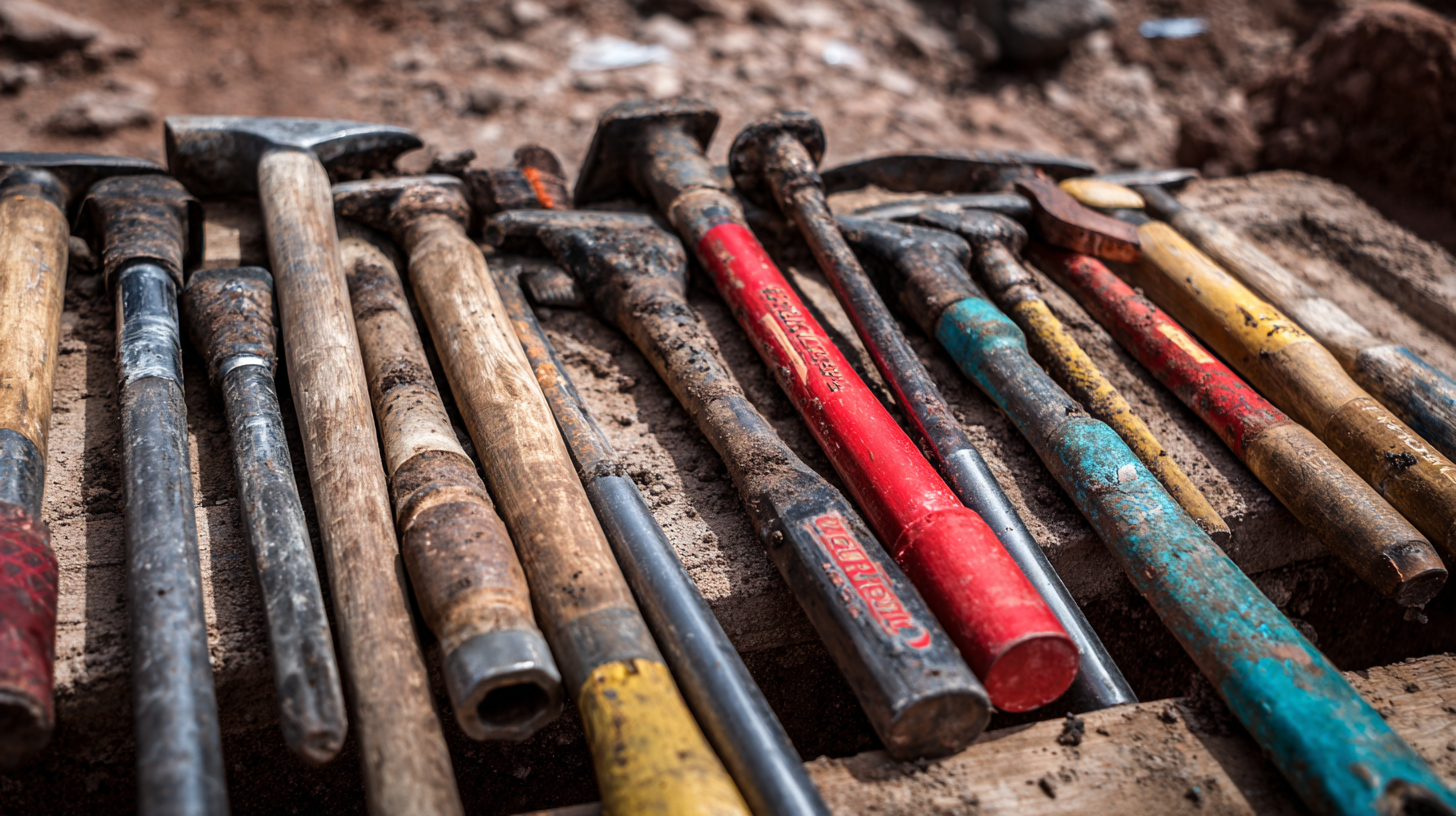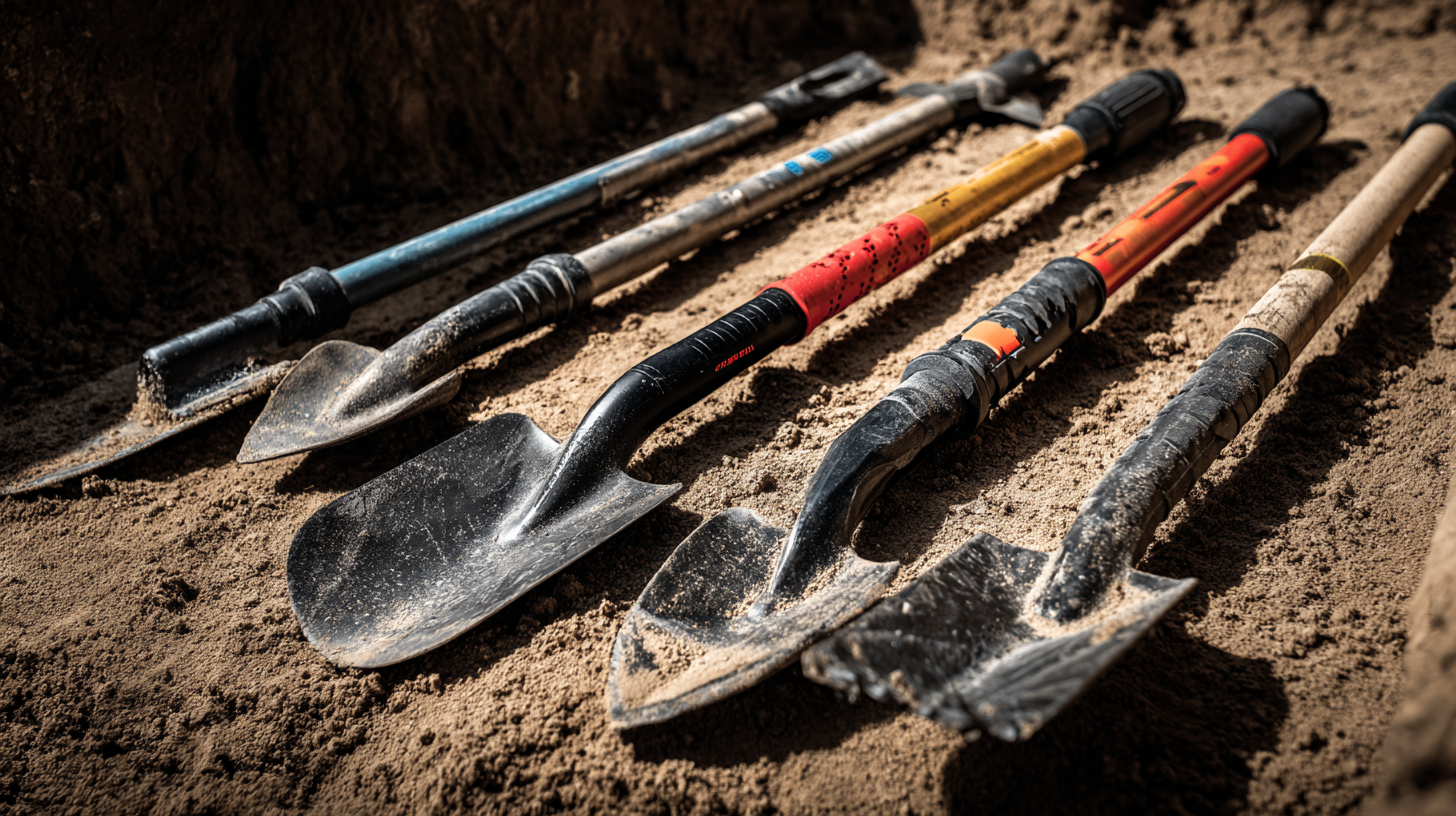Blog
10 Essential Tips for Choosing the Best Trenching Tools for Your Project Needs
Choosing the right trenching tools is crucial for ensuring the efficiency and safety of any excavation project. According to a report by IBISWorld, the excavation services industry has been growing steadily, with revenue reaching approximately $54 billion in the United States alone. As such, the demand for high-quality trenching tools has never been greater, reflecting the need for precision and reliability in various applications, from utility installations to landscaping. The proper selection of trenching tools can significantly impact project timelines and costs, making it essential for professionals and DIY enthusiasts alike to be well-informed. By understanding the key factors to consider—such as tool types, durability, and project specifications—users can enhance their productivity while minimizing risks associated with improper equipment usage. In this blog, we will explore ten essential tips for selecting the best trenching tools tailored to your project needs.

Understanding Different Types of Trenching Tools Available in the Market
When considering trenching tools for your project needs, it's essential to understand the wide array of options available on the market. Trenching tools range from manual equipment to advanced mechanized solutions like trencher attachments. These tools are designed to efficiently dig trenches for various applications such as utility installation, drainage systems, and landscaping. It's vital to assess factors such as the depth and width of the trench required, as well as the type of soil you'll be working with, as this will influence your choice of tool.
Different types of trench boxes are also available, serving as protective structures for workers during trenching operations. These boxes ensure safety by preventing cave-ins and protecting laborers from potential hazards. When selecting a trench box, consider the size and depth of your trench and the nature of the soil. Additionally, ground engaging tools (GET) are another key category, specifically designed to interact directly with the ground material. Understanding these various tools and their applications will help you make an informed decision, ultimately leading to a more efficient and safer project execution.
Key Features to Consider When Selecting Trenching Equipment
When selecting trenching tools for your project needs, it's essential to consider key features that ensure efficiency and safety. According to a report by Market Research Future, the global trenching equipment market is projected to grow at a CAGR of 7.1% from 2021 to 2027, indicating a steady demand for advanced trenching solutions. One of the critical features to assess is the cutting depth and width of the equipment. Trenching tools that offer adjustable cutting capabilities can cater to various project specifications and soil conditions, making them more versatile and cost-effective.
Another important aspect to consider is the power source and mobility of the trenching equipment. Hydraulic trenchers, for instance, provide greater efficiency in challenging terrains, while electric options are becoming increasingly popular for their lower environmental impact and operational costs. The American Rental Association notes that the rental market for trenching tools is expected to expand, driven by the construction sector's growth. By evaluating equipment based on its power efficiency, maneuverability, and adaptability to different job site conditions, professionals can significantly enhance project outcomes and reduce downtime.
10 Essential Tips for Choosing the Best Trenching Tools for Your Project Needs
| Feature | Description | Importance Level |
|---|---|---|
| Type of Tool | Choose between handheld tools, walk-behind trenchers, or ride-on trenchers based on the scale of your project. | High |
| Blade Size | Consider the width and depth of the blade to ensure it meets your trenching requirements. | High |
| Engine Power | Assess the horsepower of the engine to ensure it can handle the soil conditions. | Medium |
| Weight | Evaluate the weight for ease of transport and maneuverability. | Medium |
| Durability | Look for robust materials that can withstand tough working environments. | High |
| Ease of Use | Choose tools with user-friendly designs that minimize operator fatigue. | High |
| Safety Features | Inquire about emergency shutdowns, guards, and other safety options. | Critical |
| Maintenance Requirements | Consider how easy it is to maintain the equipment over time. | Medium |
| Cost Effectiveness | Balance initial cost with efficiency and long-term utility. | High |
| Customer Support | Evaluate the availability of technical support and replacement parts. | Medium |
Assessing the Scope and Scale of Your Trenching Project
When embarking on a trenching project, the first step is to assess the scope and scale of the work required. This evaluation will inform not only the choice of tools but also the overall strategy for completion. Determine the length, depth, and width of the trenches you need. A larger project may require heavy-duty trenching tools, while smaller tasks can be accomplished with handheld options. Understanding the project's specifics will set a solid foundation for selecting the most suitable trenching tools.
Choosing the right trenching tool is crucial for efficiency and effectiveness. For larger-scale projects, consider investing in a trencher with a robust engine and advanced features, such as adjustable depth settings. On the other hand, for residential or smaller jobs, a manual trenching shovel might suffice. Additionally, evaluate the soil type and conditions. For rocky or dense ground, tools designed for tougher terrains will save you time and reduce strain. By clearly defining the project's requirements and the environment, you can make informed decisions that aid in streamlining your trenching efforts.

Budgeting for Your Trenching Tools: Cost vs. Quality
When selecting trenching tools for your project, understanding the balance between cost and quality is crucial. While it may be tempting to opt for lower-priced tools to stretch your budget, investing in quality equipment often leads to better results and long-term savings. High-quality trenching tools are typically designed to withstand rigorous use and can prevent costly repairs or replacements in the future. Therefore, it’s advisable to research materials and brands that are known for their durability and efficiency to ensure a worthwhile investment.

Additionally, consider the specific needs of your project when budgeting for trenching tools. Think about the type and depth of trenches you need to create, as this will influence the type of tools required. Investing in specialized tools tailored to your project specifications can enhance productivity and reduce the overall time spent on the job. Ultimately, a strategic approach to budgeting—factoring in both initial costs and potential maintenance expenses—will help you choose trenching tools that not only fit your financial plan but also deliver quality performance.
Safety Considerations When Using Trenching Tools and Equipment
When working with trenching tools and equipment, safety should always be the foremost consideration. Excavation work, particularly in challenging conditions such as winter, can significantly elevate risks, including the potential for cable strikes. It's crucial for operators to assess the site thoroughly and employ protective measures that mitigate these hazards. For instance, utilizing trench shields and proper shoring methods can help prevent collapses, ensuring that both the workers and the surrounding infrastructure remain safe throughout the excavation process.
Choosing the right tools also plays a critical role in maintaining safety. Factors such as the material of the trench shields—aluminum versus steel—and their installation efficiency must align with the specific demands of the project. In addition, workers should be trained in the appropriate use of trenching equipment and the hazards associated with their operation. By focusing on both equipment selection and adherence to safety protocols, teams can enhance productivity while minimizing health risks in excavation tasks.
